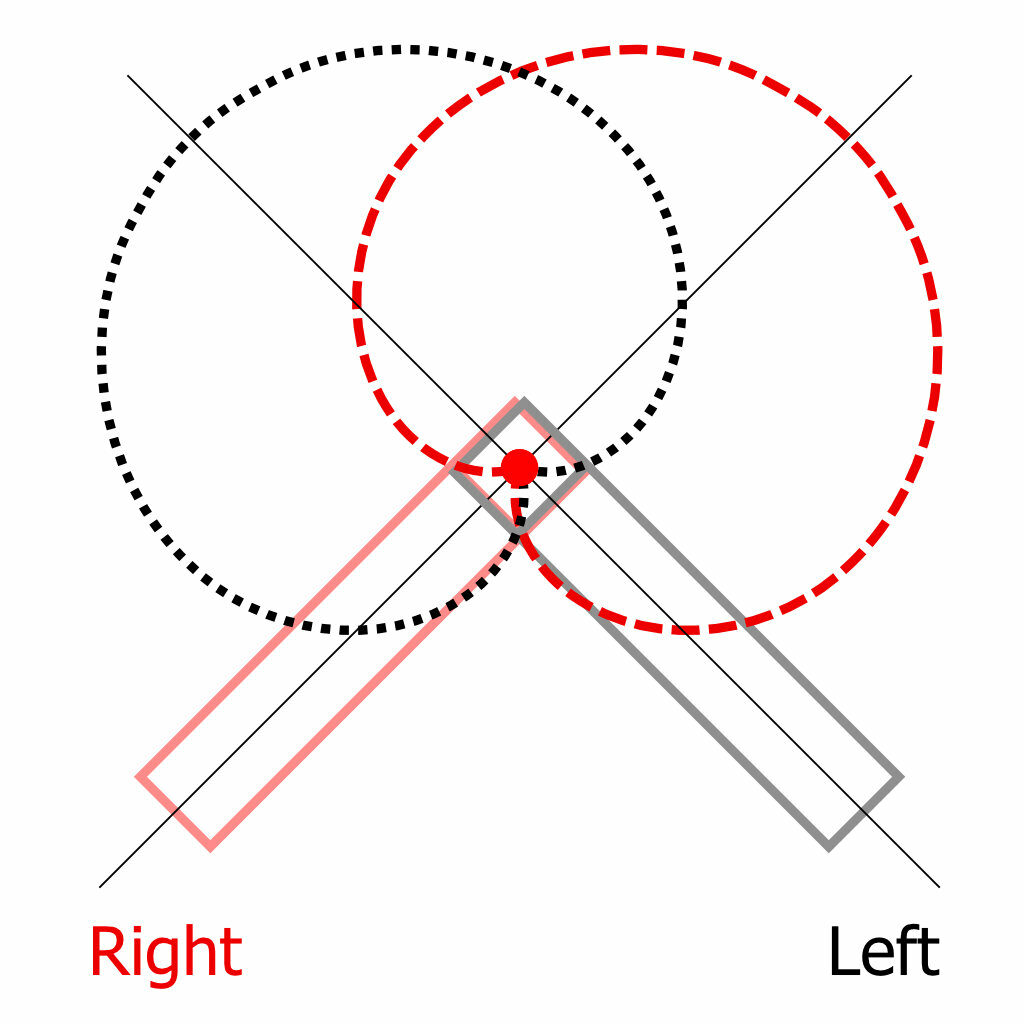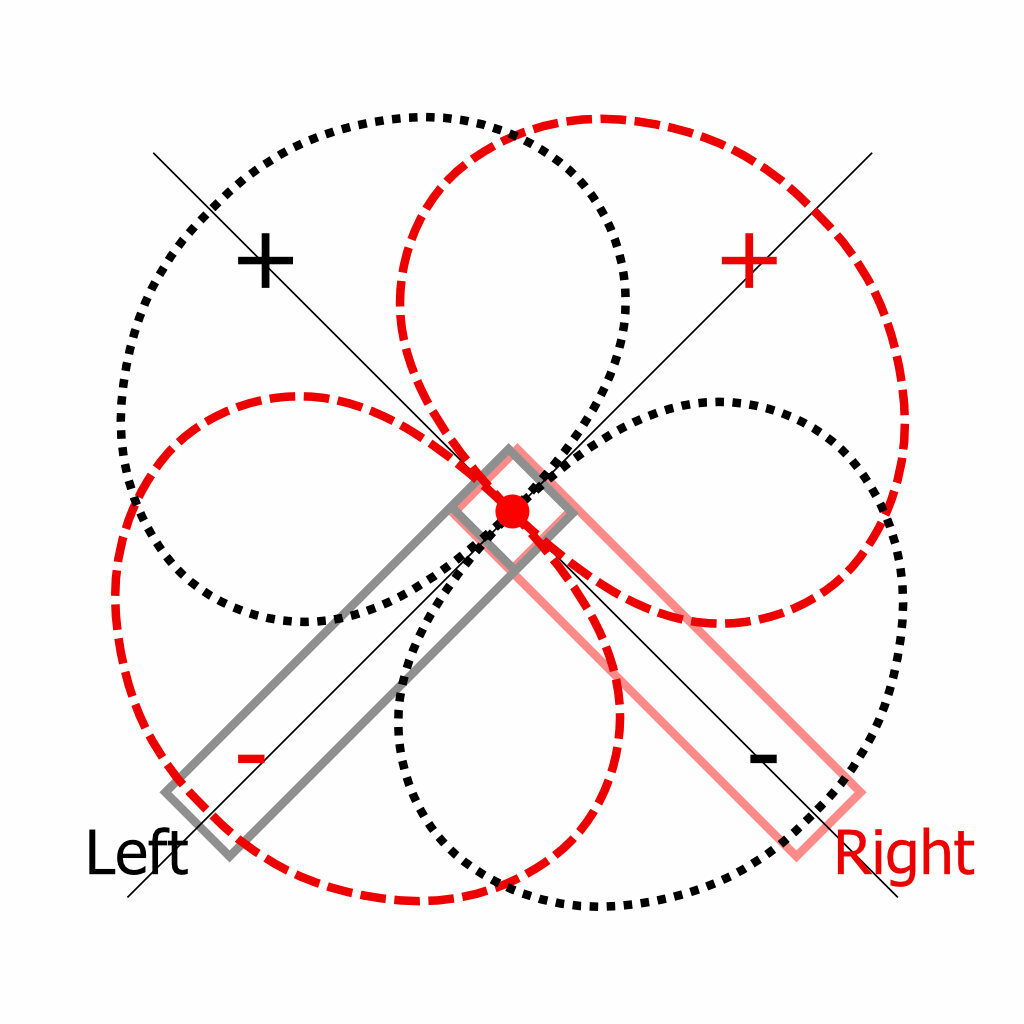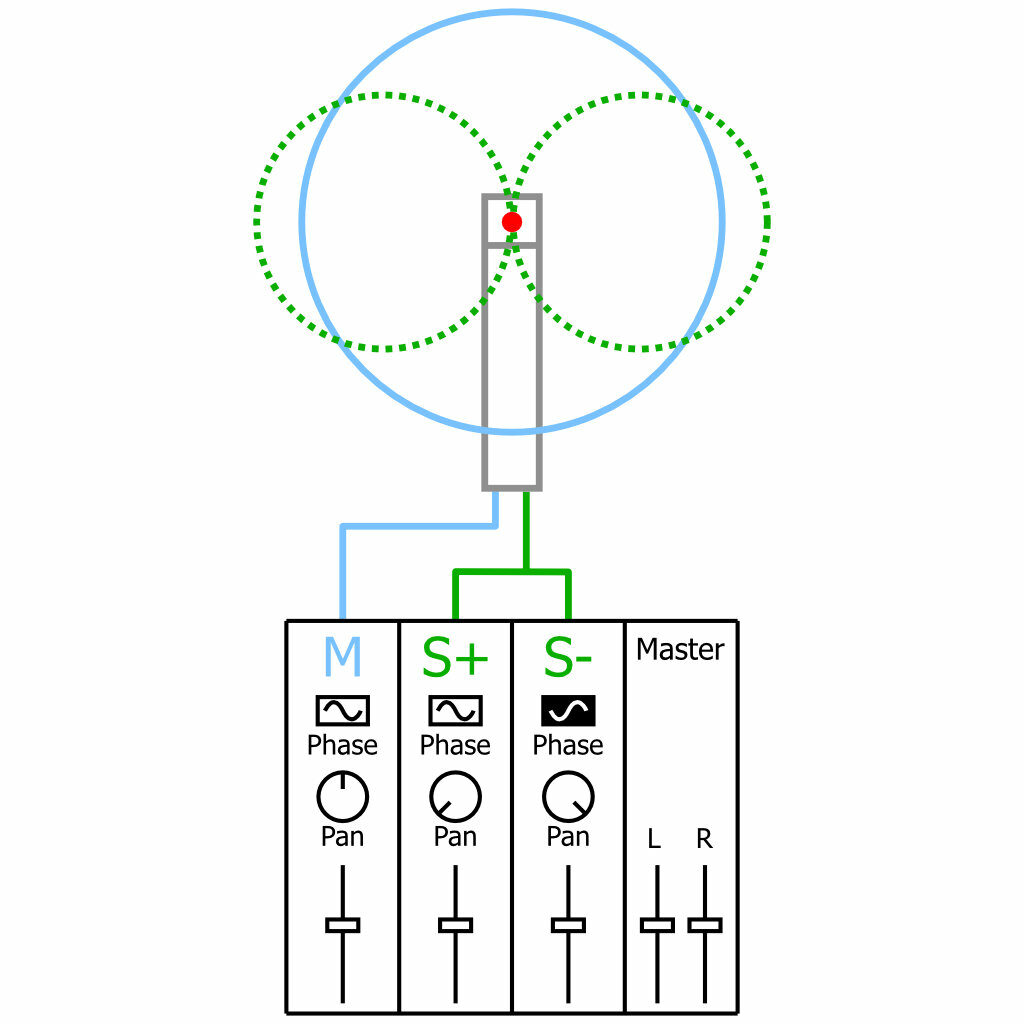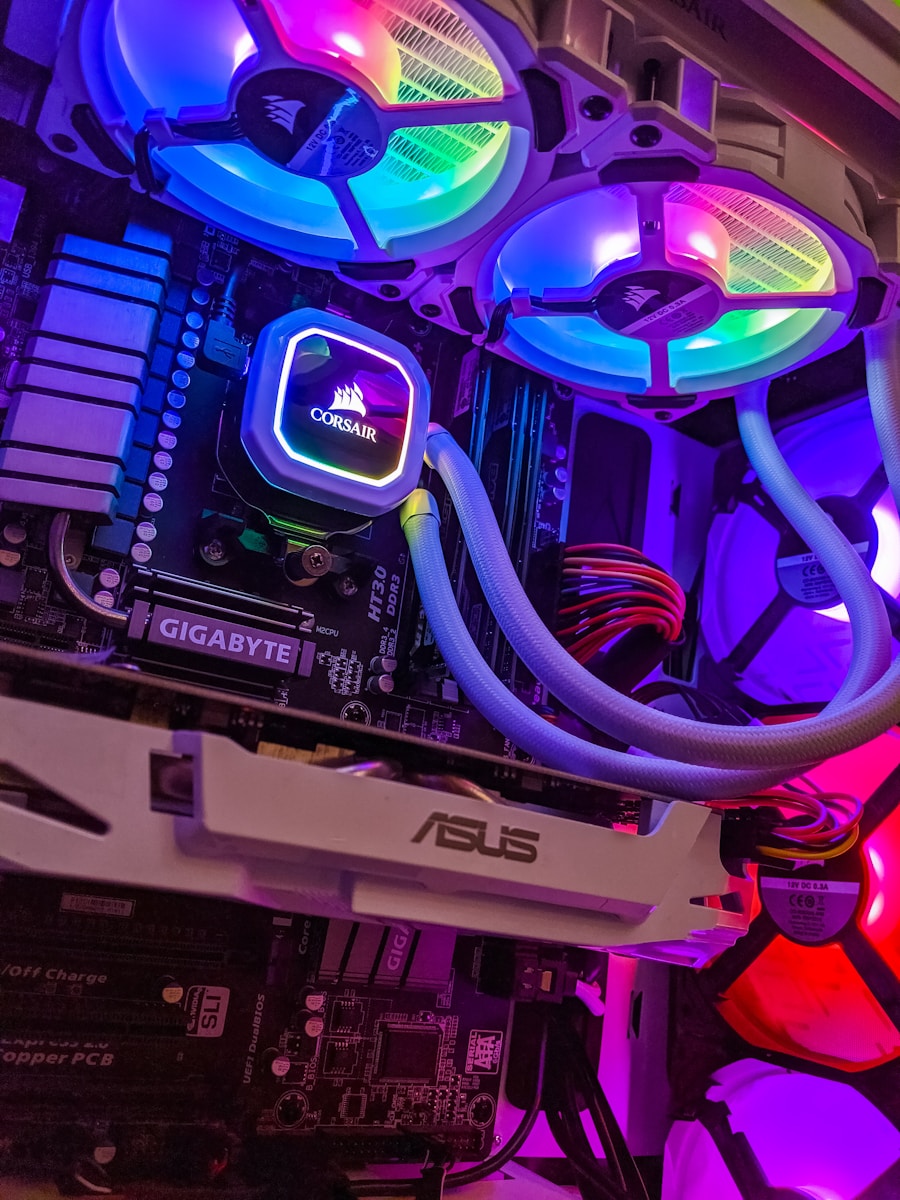If you’re fascinated by microphones, then you’ll be captivated by the amount of stereo microphone techniques we’ll be covering today. Once you start adding more microphones to the equation, things start getting more interesting (and more complicated). That’s why I’ve created this guide to help you get started and to keep exploring the possibilities!
Here’s the list of techniques we’ll be learning about today:
“ORTF” stereo microphone technique
Near-coincident stereo microphone configurations such as ORTF require two unidirectional microphones. That means you’ll get to choose between dynamic/condenser microphones.

Ribbon microphones won’t work since they’re bi-directional (figure-of-eight).
You’ll also want to make sure you’ve a matched pair of microphones for best results.
Now, to produce the ORTF microphones configuration you’ll need to place your microphones quite close to one another (hence the term “near-coincident”). To be more specific, the microphones capsules (not the microphones themselves) need to be 17 centimeters apart.
Lastly, you’ll want to angle them 110 degrees from one another.
The advantage with ORTF and other near-coincident stereo microphone techniques is that they reproduce the effect of the human ear quite well. Because of their close proximity to one another, these microphones also produce minimal phase deviation.
That’s because sound reaches them at the same time.
If you’re wondering what ORTF stands for, it’s an abbreviation for “Office de Radiodiffusion Télévision Française”. That’s where it was first used; French broadcast stations.
Suggested Microphones:
“NOS” stereo microphone technique
You’ll also be needing two matched unidirectional microphones for the NOS stereo microphone configuration. It’s also considered near-coincident and is quite similar to ORTF.

The only real difference to keep in mind is the measurements.
Once again, ribbon microphones won’t be useful for this stereo microphone technique.
To get started, you’ll want to angle your microphones 90 degrees away from one another. Once that’s done, you’ll need to make sure the microphone capsules are 30 centimeters apart.
The advantage with NOS when compared to ORTF is that you’ll get more focus on your sound source. However, you’ll technically be creating more phase deviation because of the distance. In reality though, the microphones are still too close for that to become an issue.
If you’re wondering where the name NOS comes from, it stands for “Nederlandse Omroep Stichting” That means it was first used in Dutch broadcast stations.
Suggested Microphones:
“DIN” stereo microphone technique
The final near-coincident stereo microphone configuration we’ll be looking at is DIN. Make sure you’ve got your pair of matched unidirectional microphones and we’re ready to get started.
If you prefer ribbon microphones, we’ve got some stereo configurations coming up!
DIN is almost identical to NOS except for the spacing.
Instead of spacing your microphone capsules 30 centimeters apart, you’ll want to reduce that to 20 centimeters. However, the angle of the microphones remains at 90 degrees.
The advantage with DIN is that the microphones are closer compared to NOS. That means less phase deviation and more focus. This stereo microphone technique is better for close micing.
I’m not 100% sure, but I believe DIN stands for Deutsches Institut für Normung (German Institute for Standardization). Correct me if I’m wrong!
Suggested Microphones:
“X-Y” stereo microphone technique
Coincident stereo microphone configurations such as X-Y require two unidirectional microphones. It’s ideal to use a matched pair of dynamic or condenser microphones.

Bi-directional ribbon microphones would produce the Blumlein Pair (while we’ll cover next).
The term “coincident” simply refers to the proximity of the microphone capsules which are positioned as close to each other. It’s actually desirable to place them one above the other so that they occupy the exact same space.
The angle you’ll use will depend on your desired pickup range.
90 degrees seems to be the standard, but anything up to 180 degrees can be used.
The advantage with the X-Y stereo microphone technique is that phase deviation is non-existent. However, the width of the stereo image width is reduced when compared to near-coincident configurations.
That being said, the X-Y configuration is better for close-mic applications.
Suggested Microphones:
“Blumlein Pair” stereo microphone technique
As mentioned in the previous section, the Blumlein Pair is identical to the X-Y stereo microphone configuration with the exception of the type of microphone used.

You’ll be needing a matched pair of ribbon (bi-directional) microphones.
Just keep in mind that you’ll also be capturing some room ambience with this configuration.
If you’re wondering which angle to use, you’re better off sticking with 90 degrees. Since the Blumlein Pair creates an “X”, it’s ideal to keep that shape’s proportions equal to keep the balance of sound source and room ambiance.
However, you’re more than welcome to try different angles!
The advantage with the Blumlein Pair is the enhanced stereo images when compared to the X-Y configuration. They’re both coincident, but the fact that we’re using bi-directional microphones here creates the illusion of a bigger stereo space.
The only downside is that ribbon microphones are usually much more expensive…
Suggested Microphones:
“Mid-Side” stereo microphone technique
If we were to combine the X-Y and Blumlein Pair stereo microphone configurations, we would get what we call the Mid-Side (or M-S for short) configuration.

That means we’ll be needing one bi-directional microphone and one unidirectional microphone.
However, it’s also possible to use an omnidirectional microphone instead of the unidirectional.
Basically, the bi-directional microphone would be positioned perpendicular to your sound source (hence the “side”). The other microphone would be facing the sound source (hence the “mid”).
The microphones should also be placed above one another since the Mid-Side stereo microphone technique is coincident. It’s also important to note that you’ll need to “split” your bi-directional microphone’s signal during after recording.
In other words, you’ll need to duplicate the track and reverse the polarity of one channel.
One of them will be panned left and the other to the right. The unidirectional microphone remains in the center.
The big advantage with the Mid-Side configuration is the ability to control the proportions of the stereo image during the mixing stage. It’s also much easier to mix it down to mono.
It just requires some proper engineering, but that’s what it’s all about!
Suggested Microphones:
“A-B” stereo microphone technique
The A-B stereo microphone configuration is quite different from the others. It actually takes advantage of two omnidirectional microphones spread apart.
It’s possible to use unidirectional/bi-directional microphones, but it won’t yield the best results.
That’s because the difference in arrival time would cause phase deviation.
The only thing you need to know about the A-B stereo microphone configuration is that the microphones need to be spread apart. The amount of space between the microphones will depend on the size of your sound source.
The bigger the sound source, the less space you need.
The smaller the sound source, the more space you need.
If you don’t know where to start, you can begin with 50 centimeters. That would give you a pickup range similar to the ORTF configuration and an arrival time of 1-2 milliseconds.
Since we’re working with omnidirectional microphones though, the phase deviation will be “masked” by the polar pattern’s ability to capture sound from all angles.
Suggested Microphones:
“Jecklin Disk” stereo microphone technique
The Jecklin Disk stereo microphone configuration is actually just an interesting variation of the A-B configuration. The only difference is the introduction of a sound absorbing Jecklin disk between the two omnidirectional microphones.
Basically, that exaggerates the separation between both microphones.
That means that you’ll experience increased arrival time at shorter distances.
It’s also important to space the microphones to the size of a human head (which is usually about 35 centimeters). Separating the microphones more would defeat the purpose of using the disk.
The advantage with using this method is that it better replicates the effect of the human ear while creating the illusion that the stereo space is bigger.
Think of it as an improvement on the traditional A-B technique.
Suggested Microphones:
“Decca Tree” stereo microphone technique
Since we’re already talking about omnidirectional microphones, it’s important to know about an interesting stereo microphone configuration called Decca Tree.
You probably won’t use it, but you never know!
It’s mainly used for orchestras/choirs since it’s designed to capture the sound of large sound sources and/or rooms. What’s really special about it is that it uses THREE omnidirectional microphones positioned in triangle formation.
Ideally, the triangular grid should be equilateral, but you can play with the proportions.
It’s also best practice to place them at least 1.5-2 meters away from one another.
Although these three microphones could be placed anywhere in the room, the tendency is to elevate them in the air ABOVE your sound source.
One microphone should also be declared as the “front” microphone and placed at the edge of the sound source while the other two are placed further back.
The real advantage with this technique is the ability to capture a room’s sound with the utmost precision, but if you’re not working with large ensembles and/or don’t have the proper acoustic space(s), you’re better off not using Decca Tree.
Suggested Microphones:
“Recorder Man” stereo microphone technique
If you’re into recording drums, you’ll definitely want to know about Recorder Man. It’s a relatively new stereo microphone technique that was designed to record drums with minimal phase deviation while maximizing stereo image width.
You’ll need two unidirectional microphones, but they don’t necessarily need to be matched.
You can actually accurately capture the entire drum kit using just these two microphones, but it’s still best to think of them as overhead microphones.
Traditionally, overhead microphones use the A-B configuration (which causes phase deviation).
The first step you’ll need to take is to place one microphone right above your snare drum. The second step is to place the other microphone above your right shoulder pointing towards the snare drum (you can also point it towards the kick drum a bit for more punch).
It’s SUPER important that these microphones are equidistant though!
I usually go for about 3-4 feet. If the distances aren’t the same, your kit will be out-of-phase.
Suggested Microphones:
“Binaural” stereo microphone technique
Last (but not least), we’re finishing off with another contemporary and abnormal stereo microphone configuration called Binaural. It has nothing to do with binaural beats!
The purpose behind this technique is to closely replicate the human ear (or ears).
What better way to accomplish that than by using a mannequin head! Yes, you’ll need one.
However, we’re not talking about your typical mannequin head. Neumann actually sells one equipped with the “special” microphones you’ll need which are molded into the ear.
The only problem is that it costs roughly 10,000$…
You might be thinking, aren’t near-coincident microphone techniques the same?
More or less, but it’s really the ear molding that makes the difference (from what I hear). Either way, the closest thing you’ll get is the Jecklin Disk configuration.
I just wanted to talk about the Binaural stereo microphone technique because it sounds kind of ridiculous, but very interesting at the same time.
Maybe you can try making your own? Let us know how that goes in the comments!
The best tools for stereo microphone techniques
I guess you could just use those microphone stands you’ve got lying around, but there are actually microphone stands/bars designed for stereo recording. You’ll also be needing some Jecklin Disks if you want to go that direction.
Lastly, you’ll also want to make sure to have a measuring tape and protractor!
The best microphone bar I found is the Rode SB-20:
It includes some VERY convenient markings for measurements/angles. It’s also super easy to adjust the spacing/height of each microphone.
If you’re looking for Jecklin Disks, it won’t be as simple though… The ones I’ve seen are actually ridiculously overpriced so I recommend making your own.
Here’s a tutorial I found.
However, you can just as easily use baffling or any type of sound absorbing materials.
So that’s pretty much it! If you have any questions/comments, leave them down below. I hope that this article inspired you to start sound recording (or pick it up again). Thanks for reading, now go out there and make some great tracks!
Sources
https://www.dpamicrophones.com/mic-university/stereo-recording-techniques-and-setups




